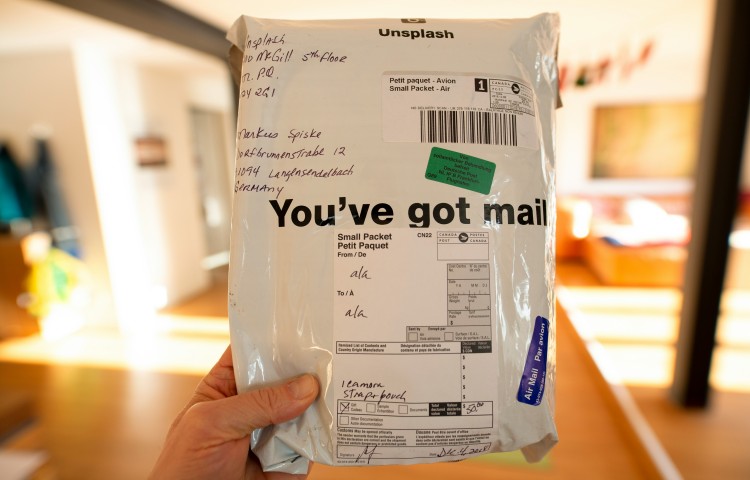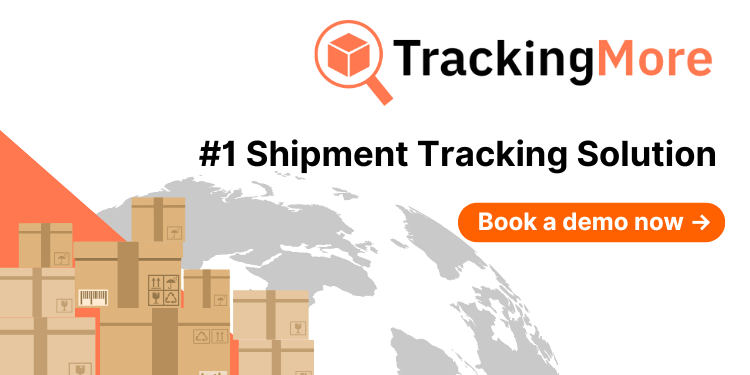Delivery date is the time that an item will be delivered to the recipient. It depends on various factors, like the shipping option – standard or express, distance between shipping and receiving locations, and other potential factors that delay the delivery.
Why is an estimated delivery date important especially for eCommerce? A Hotjar survey shows that 22% of cart abandonment is caused by long shipping times. By informing customers about the estimated delivery time while they are viewing the product, rather than only at checkout, sellers can improve customer satisfaction by managing expectations upfront, therefore reducing cart abandonment rates.
What is the Estimated Delivery Date?
The Estimated Delivery Date, also called EDD, indicates when your order is likely to arrive and is crucial for time-sensitive purchases.
For example, consider a customer buying Christmas gifts for their children. The delivery date of the product is a primary concern, as they need the gifts to arrive before Christmas, not after. Even in ordinary situations, providing an estimated delivery date can minimize customer frustration during the wait for their packages, enhancing their overall post-purchase experience.
Why Is EDD Important?
A survey from Australia Post shows that delayed deliveries that arrive on the estimated delivery date provided have 76% fewer contacts than delayed deliveries with no EDD provided. This can decrease the workload of the customer support team and lower the operational costs for eCommerce merchants.
From a logistics perspective, EDD is essential for planning and resource allocation. It allows logistics companies to optimize their delivery routes, manage inventory more effectively, and plan their staffing needs according to the volume of goods that need to be delivered.
Every customer looks for the order tracking page after placing an order online, especially when purchasing something expensive or meant for someone special. In these cases, they often send inbox messages or frequently call to check the tracking status of their packages. Giving them an exact delivery date can reduce those WISMO (Where Is My Order?) requests.
Remember, displaying the delivery date prominently on your tracking page keeps customers informed and reduces their need to contact your customer support team.
How to Calculate the Estimated Date of Delivery?
The estimated delivery date depends on the time it takes to process the order, ship it, and the customer’s location. In simple terms, the formula is:
Estimate Delivery Date = Processing time + Carrier transit time
To easily find out the estimated arrival times of different carriers in various countries, use an EDD Calculator widget.
However, there are many factors that can affect EDD.
Factors that Affect Estimated Delivery Date
- Shipping Method: Firstly, the shipping method influences the estimated delivery date. Options like Standard Ground, Expedited, and Overnight Shipping each offer different speeds, affecting how quickly the package will arrive.
- Processing Time: The time needed for the seller to prepare the order, including product selection, packaging, and labeling, can vary and affect the delivery date.
- Transit Time by Carrier: This is the time it takes for the carrier to deliver the package, influenced by distance, shipping method, and carrier efficiency.
- Product Availability: Shipping can be delayed if the product is out of stock, extending the processing time and delaying the final delivery.
- Shipping to Other Countries: Compared to domestic shipping, international shipping potentially causes significant delays due to customs clearance, carrier networks, geographic challenges, and international holidays.
- Volume of Orders: High order volumes during holidays or sales can slow down processing and shipping times, leading to delays.
- Distance: The distance between the seller and the buyer affects how long it takes for the shipment to arrive. Shipping to nearby places is usually faster than shipping to faraway locations.
- Destination: The buyer’s location can affect delivery times, especially if the destination is remote or hard to reach.
Advanced EDD Calculation with Big Data
To account for these factors in calculating EDD, businesses use big data and advanced algorithms. By analyzing historical data, real-time logistics, and external conditions like weather and holidays, they can provide more accurate and reliable delivery estimates. Big data helps to dynamically adjust predictions and enhance the overall customer experience.
How Does EDD Help Your eCommerce Business?
When you show your customers the estimated delivery date, it gives them the best shopping experience. Also, it builds trust in your service, and when they finally receive the order after tracking each step, they become happy and make a repeat purchase. That’s why smart brands always prefer to make their customers happy. Here are the key reasons why EDDs are crucial.
1. Increase Conversion Rates
Knowing the delivery date before purchasing can significantly influence a customer’s decision, particularly during busy periods like holidays. Accurate delivery dates reduce cart abandonment as customers feel more confident in their purchase.
2. Reduce Cart Abandonment
Many online stores display delivery times only after checkout, often based on the customer’s location. Customers now expect quick delivery, and delays in providing this information can lead to cart abandonment.
3. Meet Customer Expectations
Many customers plan their schedules around the estimated delivery date. Providing this information allows them to ensure they are available to receive their packages, improving delivery success rates.
4. Enhance Customer Loyalty
Setting and meeting an estimated delivery date builds trust and credibility. Timely deliveries create positive experiences, making customers more likely to return.
5. Improve Operational Planning
Integrating EDDs into operational planning ensures efficiency by aligning business operations with strategic goals. This involves defining clear objectives, allocating resources effectively, and outlining responsibilities, thereby optimizing the entire supply chain and improving overall productivity.
6. Mitigate Delivery Risk
Package theft is a growing concern. Providing precise delivery dates and times helps customers plan to collect their packages promptly, reducing the risk of theft and associated disappointment.

4 Strategies for Providing Accurate Estimated Delivery Dates
Accurate Estimated Delivery Dates (EDDs) are crucial for customer satisfaction and operational efficiency. Here are four strategies to help your business provide precise EDDs.
1. Leverage Data-Driven Forecasting
Utilize data-driven forecasting by incorporating traffic management systems to improve delivery accuracy. These systems track traffic patterns and use historical data to find the quickest routes for drivers, helping to prevent shipping delays. By analyzing performance measures such as on-time delivery rates, average transit duration, and customer satisfaction ratings, you can optimize routes and vehicle usage, streamlining operations to deliver superior service.
2. Enhance Logistics Operations
Enhancing logistics operations involves managing stock, fulfilling orders efficiently, and optimizing shipping processes. Develop a comprehensive plan that includes leveraging technology and carrier partnerships to improve the supply chain. This reduces costs and speeds up deliveries, enhancing overall customer satisfaction. An in-depth understanding of logistics and delivery methods is essential for any eCommerce business.
3. Optimize Inventory Management
Effective inventory management ensures consistent sales and prevents stockouts, which can delay deliveries. Always maintain a backup plan (Plan B) to keep your stock levels adequate. Monitoring inventory in real-time allows for timely reordering, ensuring you never run out of stock and can meet customer demand without delay.
4. Implement Advanced Technology
Adopting advanced technology places you ahead of competitors and improves operational efficiency. Use software solutions to automate tasks such as creating shipping labels, tracking packages, and handling returns. Technologies like TrackingMore can integrate with e-commerce platforms to streamline order tracking and reduce delivery times and costs.

Wrapping Up
Most eCommerce business owners overlook this valuable addition, costing them money. However, integrating estimated delivery dates into your business and observing the results over time will likely bring you great satisfaction. Implementing this simple yet effective strategy can significantly enhance customer satisfaction and boost sales.
FAQs on Estimated Delivery Date
What does it mean when UPS says the estimated delivery date?
When UPS provides an estimated delivery date, it means the date they expect your package to arrive at its destination based on current shipping conditions and schedules. This estimate can be influenced by factors like transit times, holidays, and any potential delays.
Does USPS give an estimated delivery date?
Yes, USPS does provide an estimated delivery date. You can find the USPS estimated delivery date on:
- The USPS tracking page.
- Your shipping receipt.
- Email notifications.
- The USPS mobile app.
How accurate is the DHL estimated delivery time?
DHL‘s estimated delivery time is based on their extensive logistics network and historical data, making it quite dependable. However, unforeseen circumstances like customs inspections or weather events can impact the actual delivery time.
Does FedEx Hold Packages Until The Estimated Delivery Date?
FedEx often aligns deliveries with the scheduled delivery date. This approach helps maintain the value of their premium, expedited services and ensures efficient space and time management for all scheduled deliveries.
What should I do if my Amazon order hasn’t arrived 48 hours after the estimated delivery date?
If your Amazon order hasn’t arrived 48 hours after the estimated delivery date:
a. For orders shipped by Amazon, contact Customer Service within 30 days of the estimated delivery date.
b. For orders shipped by a third-party seller, contact the seller directly for assistance.
How can I track my order?
You can use TrackingMore’s order tracking page to keep track of your parcel’s current location and status. TrackingMore is integrated with over 1,200+ carriers worldwide, you can track 50 orders at one time.
The TrackingMore team shares insights on logistics tracking technology, industry trends, and e-commerce logistics solutions to help businesses streamline shipment tracking and enhance customer post-purchase experience.